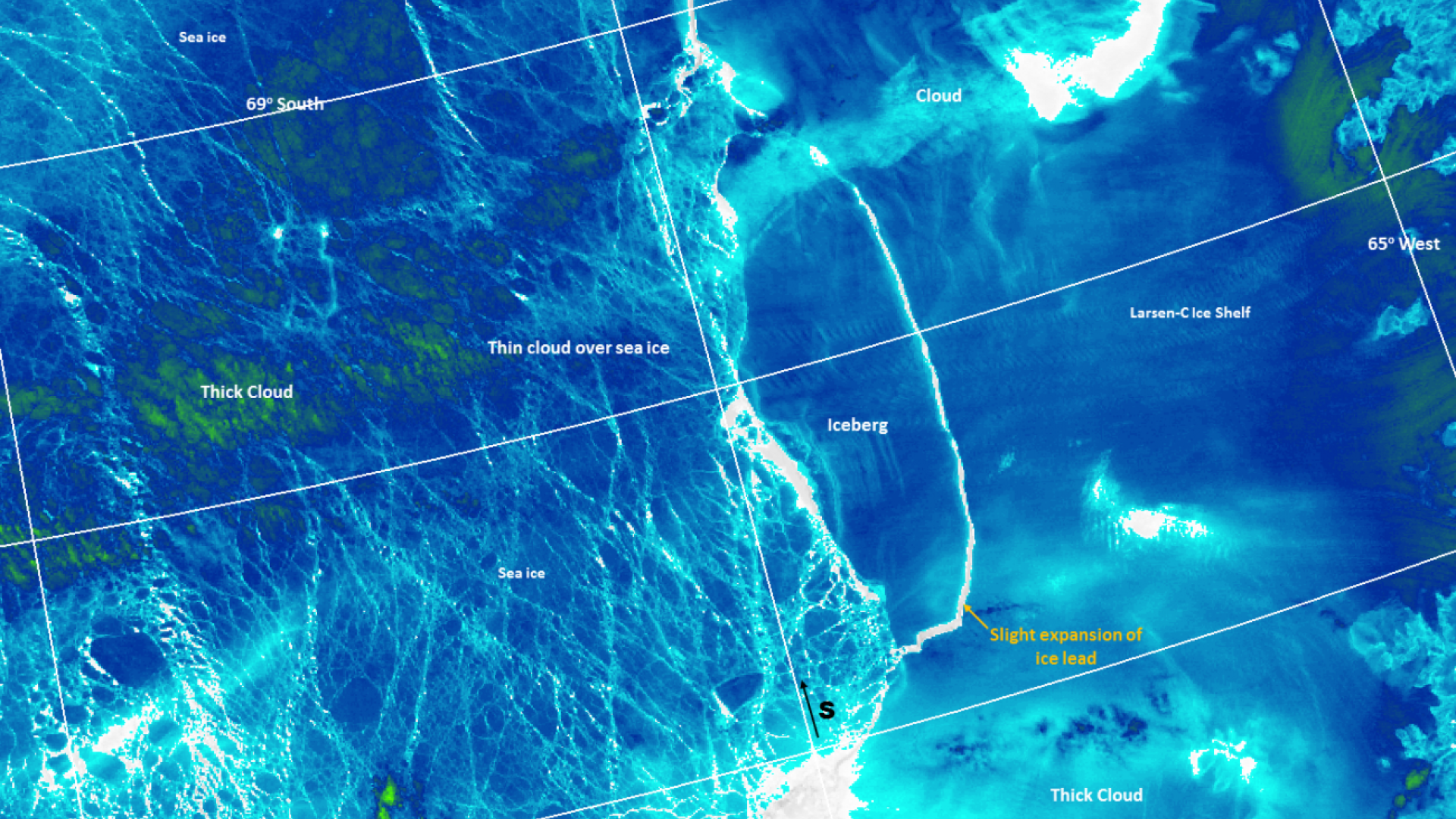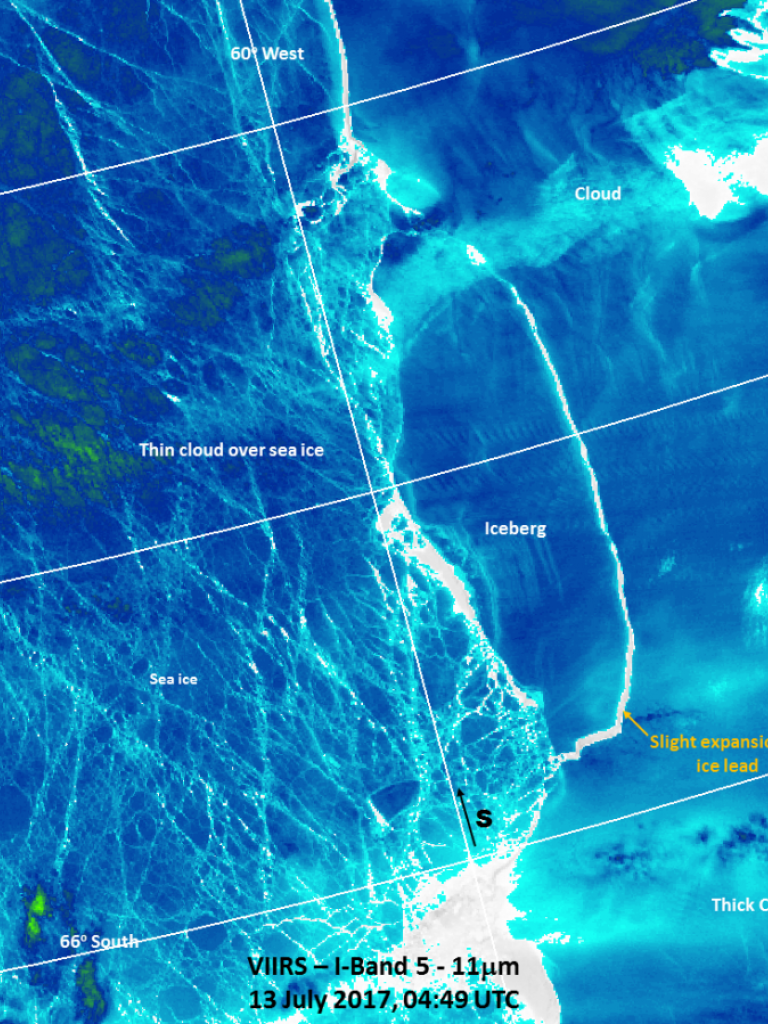A better way to find tailored climate data
A paper presents a novel method for finding data for climate applications.

A massive iceberg, about three times the size of London, split off from Antarctica’s Larsen C ice shelf sometime between 10 and 12 July 2017.


11 March 2021
24 July 2017
The breakage was first reported by Project Midas, an Antarctic research project based in the United Kingdom.
Figure 1 is the Day Night Band from the VIIRS instrument on 13 July 04:49 UTC, the fracture from the ice shelf can be clearly seen as the thin dark line, which is an area of clear water (indicated by the yellow text).

On Figure 2, the infrared image from the VIIRS instrument, the iceberg (named A-38) is very distinct.

Although breakoffs from the ice shelf are normal, this is one of the largest icebergs to have broken off.
Because of a lack of measurements over the Larsen C ice shelf, there is much debate about if this event can be attributed in any way to climate change. In this case, A68 will not raise global sea levels, as it was already afloat in the Weddell Sea. Research will need to be done in order to see if the loss of this iceberg will speed up the collapse of the Larsen C ice shelf.